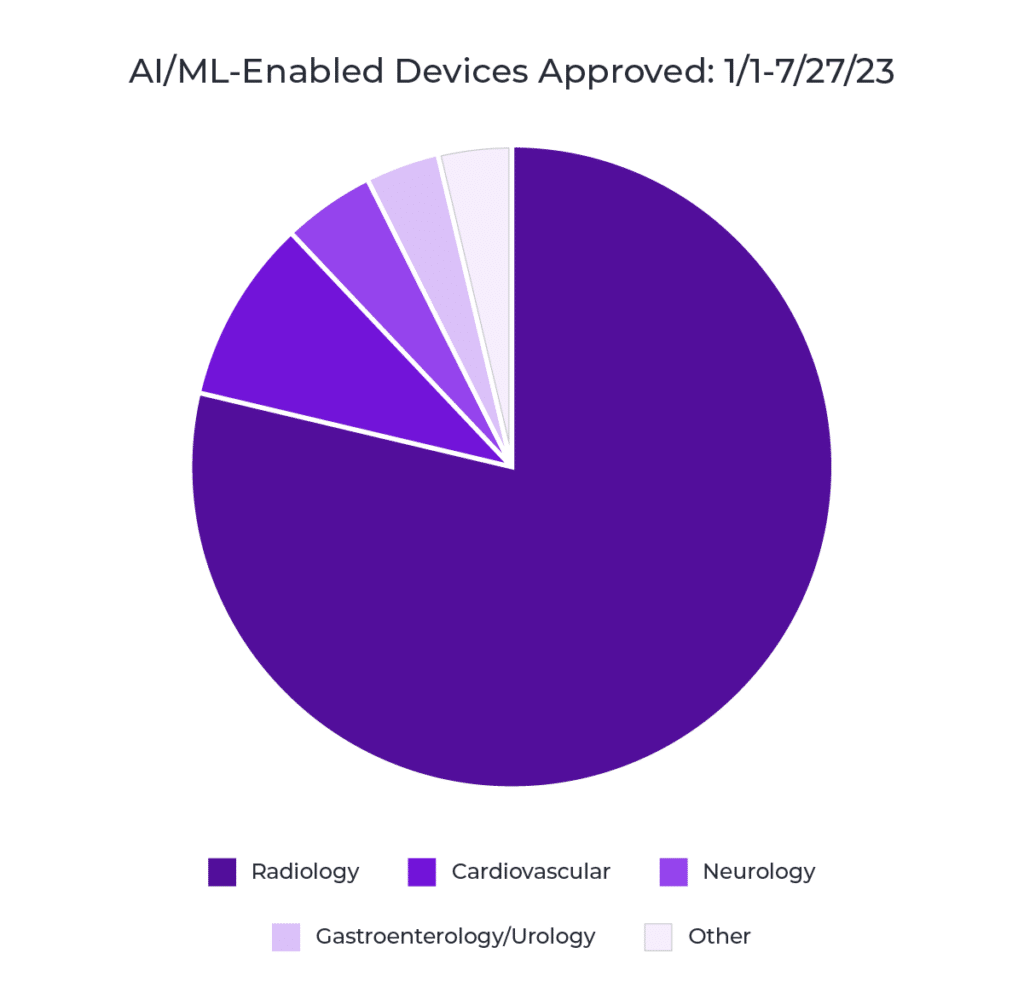The digital experience of your medical device can be just as important as the device itself. As our world becomes inherently more digital, the digital experience of your product is not just an afterthought or a nice-to-have.
When it’s well thought out, your digital experience (what we call the “digital ecosystem”) can be the thing that puts you ahead of the competition and drives product loyalty. It can provide unique value propositions for your device, such as procedural efficiency and better reimbursement opportunities.
Why Your Digital Ecosystem Is Important
The idea of building a digital ecosystem is a significant shift from the typical process of developing a medical device—focusing only on the device itself, and maybe the digital experience comes later as an add-on. However, by building a digital ecosystem around your device, you can create a full experience for your customers.
In the world of medical devices, improving outcomes is table stakes. Your product has to either lower costs or drastically increase results for patients.
Your digital ecosystem then has the opportunity to keep your customers coming back. Depending on the type of device and what your customers need, that could mean different things. Perhaps it makes the procedure easier for the physician, or makes it more efficient to review post-procedural data. For more patient-facing devices, it could mean creating a system that makes it easier for the patient to adhere to the treatment plan.
Finding out what your customers need and creating that experience for them will make them more loyal to your product, and depending on the nature of your digital ecosystem, could even make it more costly to switch to something else.
Connecting Your Digital Experience with Physicians’ Needs
When you are building your digital ecosystem, it is so critical to understand what your customers need from your device beyond improving clinical outcomes. What would make their processes easier or more efficient? What would improve reimbursement? These are the kinds of things to consider.
To develop the right digital ecosystem, you will likely need to consult with the physicians who are going to be using your device to understand what their pain points are. They might not be what you think.
And even if your device doesn’t go far above and beyond existing technology, there are still things you can build into your digital ecosystem that would be a huge value-add for physicians.
For example, if your product’s digital component can transcribe audio from the operating room, that doesn’t improve the clinical outcome, but it does make it a lot easier for physicians to put together their case notes. That in turn helps them save time in their day, possibly allowing for more procedures to be completed.
If there are similar products on the market, it is also important to understand what they are doing and how they are positioning their products. This allows you to find a space for your product in the market and helps you identify where gaps might exist that you can fill with your digital experience.
It also helps you keep up with where the market is going so your product doesn’t fall behind, and helps you understand what customer expectations might be in relation to what they’ve already seen.
Understanding the Challenges & Considerations of Building Your Ecosystem
To build your digital ecosystem, you need to have the right team in place. The process of developing the device itself requires a different skill set than the supporting software. With your digital ecosystem, you need a team that understands software development and user interface design.
With all of that comes a discussion of how to handle the data. You’ll need to account for how and what data is being gathered, and how that data is being transferred out, processed, and stored.
From a regulatory perspective, all of this can come into play when you need to make updates to the device. If you don’t have a team who is carefully planning out that software architecture, software updates could significantly slow you down. In turn, it may take longer to get your clients what they need from your software.
When you have the right people and skill sets on board (whether internally or outsourced), you can head off some of these challenges earlier on so that you can regularly update your software to meet the evolving needs of your customers. When you are competing with similar products from other companies, that speed and efficiency can be a big win.
In fact, some of the more interesting developments in “speed to market” include companies providing more regulated tools to medical device engineers that mirror what startups have in other business sectors. As more medtech companies build digital tools, the processes become more repeatable. Those experiences are now starting to benefit all companies within this space.
AI & the Future of Digital Ecosystems
As with other industries, AI and machine learning (ML) are hot topics and can potentially bring a lot of value to medical device software.
Some of the ways AI might be applied include analyzing data to provide useful insights and connecting data to EHR systems. If AI can be used to provide features that justify the cost of the device, that is certainly a worthwhile avenue to pursue.
While the concept of AI is quite “buzzy” today, some are predicting that AI may eventually become a standard for medical device software. At one time, having software for a device was a novel idea, and now it is quickly becoming an industry standard—especially in radiology (see the 2023 FDA list of approvals for AI/ML-enabled devices).

Companies that are at the forefront of using AI in a meaningful way may be able to carve out an advantage in the market if those features are helpful to customers.
How the Digital Ecosystem Fits Into the Life Cycle of Your Product
The digital ecosystem can play a critical role in the life cycle of the product for product marketers and marcom alike.
It is important to stay attuned to your clients’ needs as the development process becomes more rapid. Software is solving increasingly difficult problems, so the key is understanding where you can provide the most value to your customers.
Michael spends a great deal of time with the healthcare industry both professionally and personally, which gives him the perspective of what stakeholders on either side of the care equation need.
He began coding in 2008 and subsequently shifted his attention entirely to online marketing. Michael completed his MBA in 2018, focusing on the intersection of healthcare and marketing.
As the marketing manager, Ashley ensures that our clients’ marketing strategies are put into action. This includes content writing, SEO, online advertising, analytics, and interfacing with the tools, systems, and team members needed to help our clients accomplish their marketing goals.


